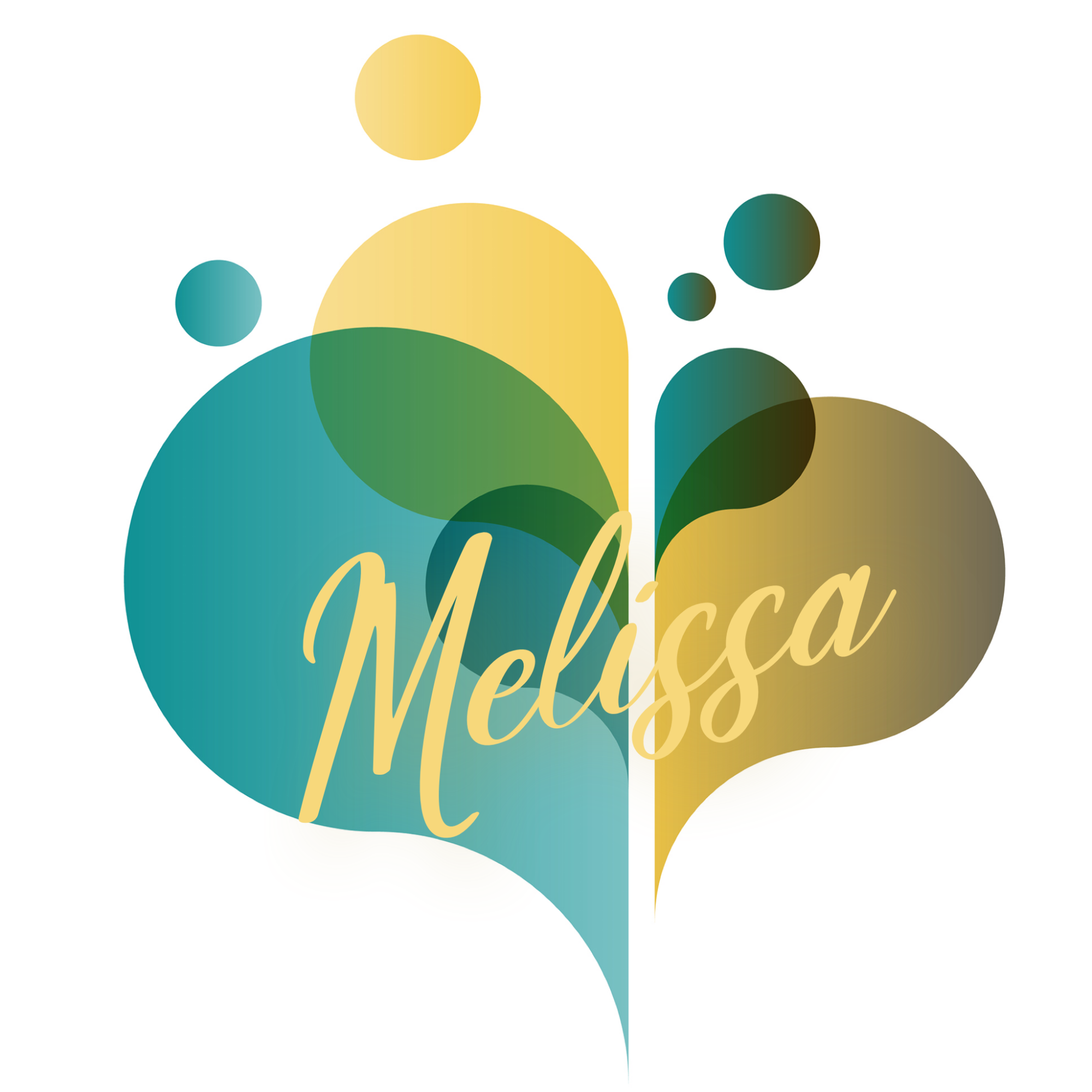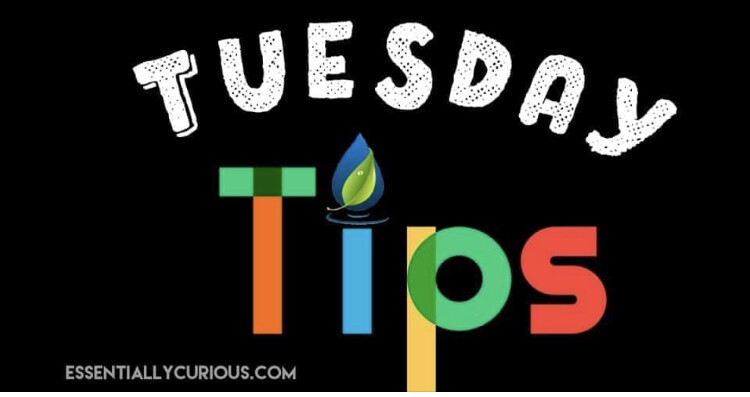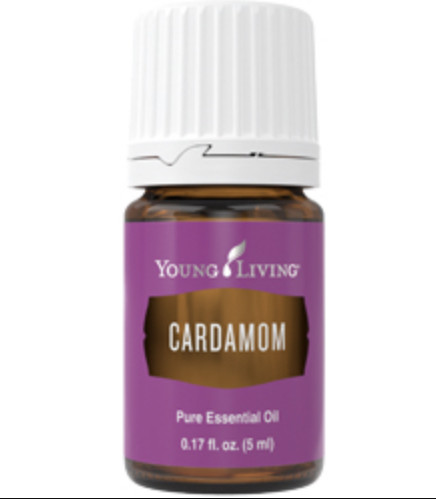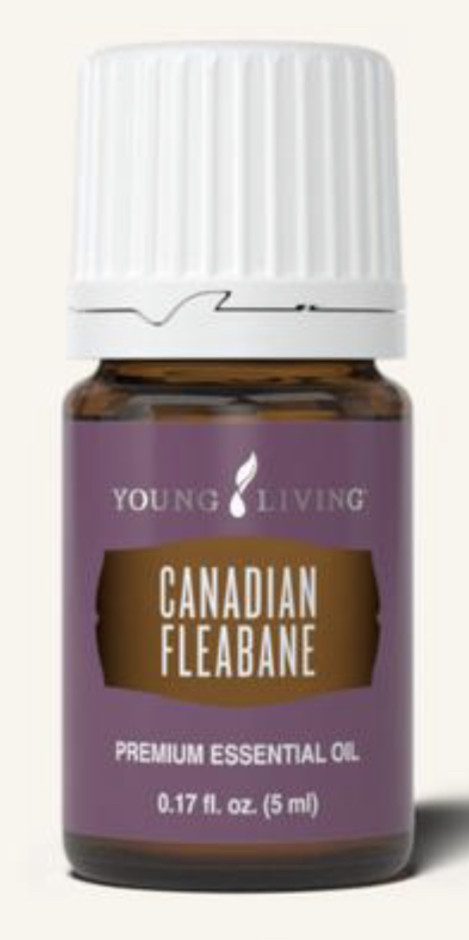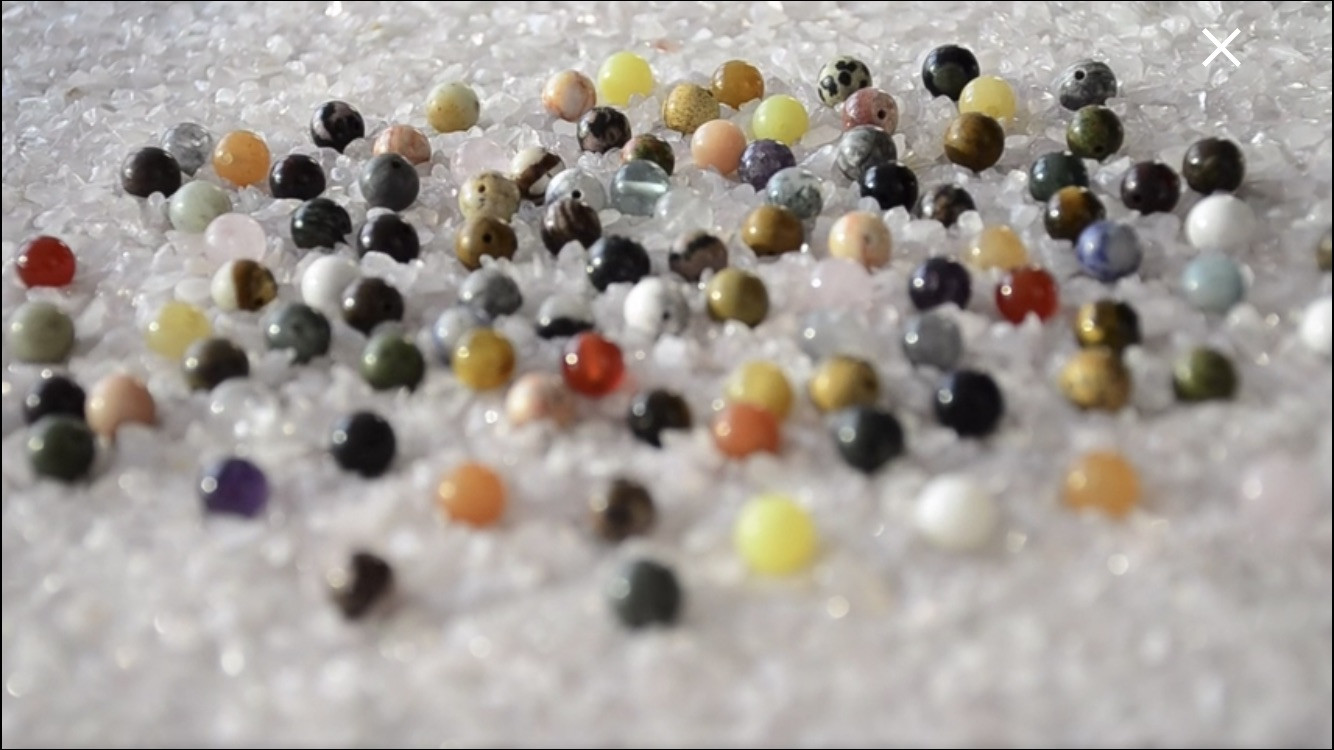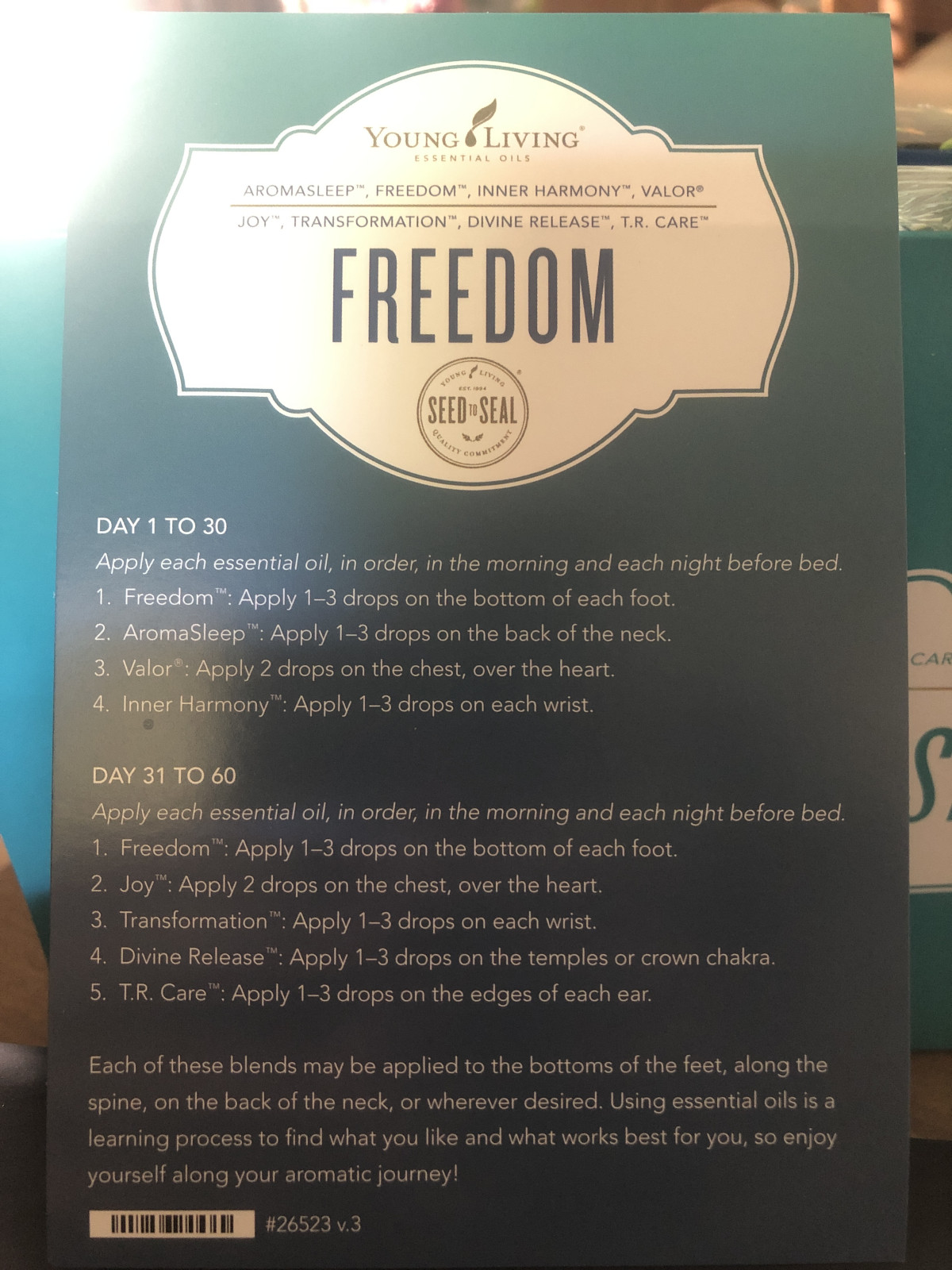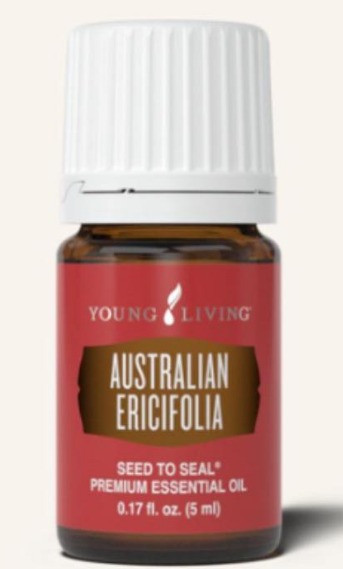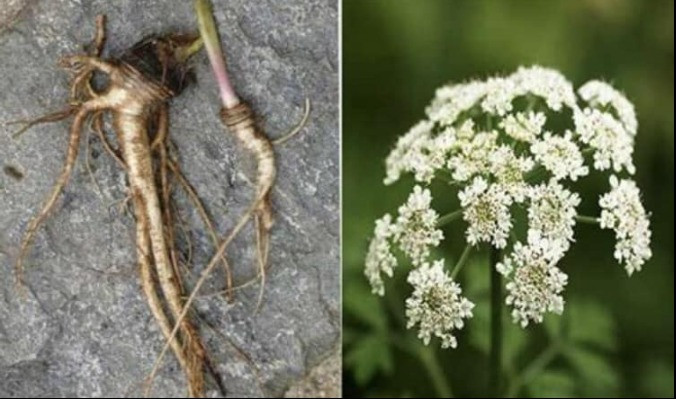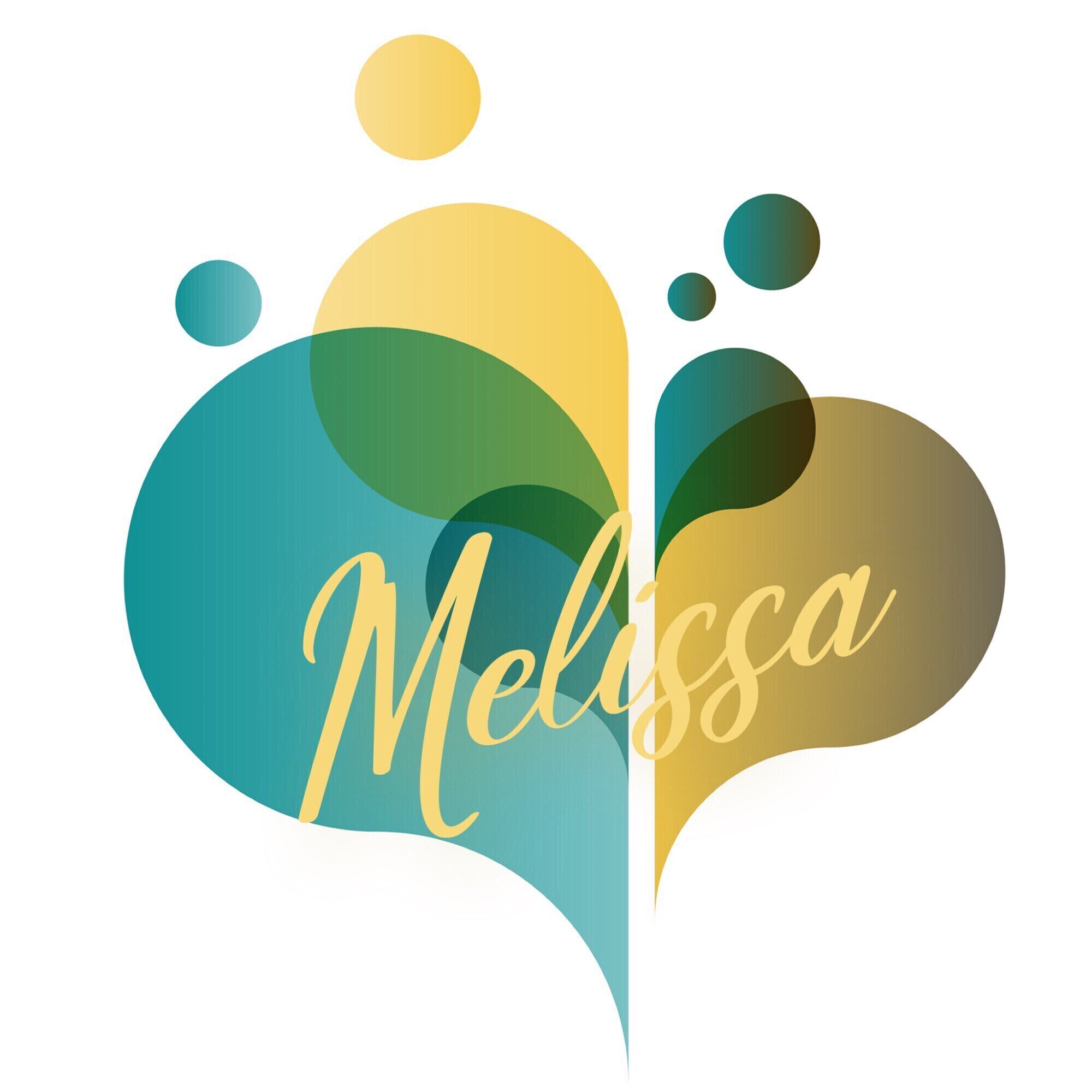How are you doing? Truly? There's so much going on right now and I hope you know I'm here to pray with you or just talk if things get overwhelming.
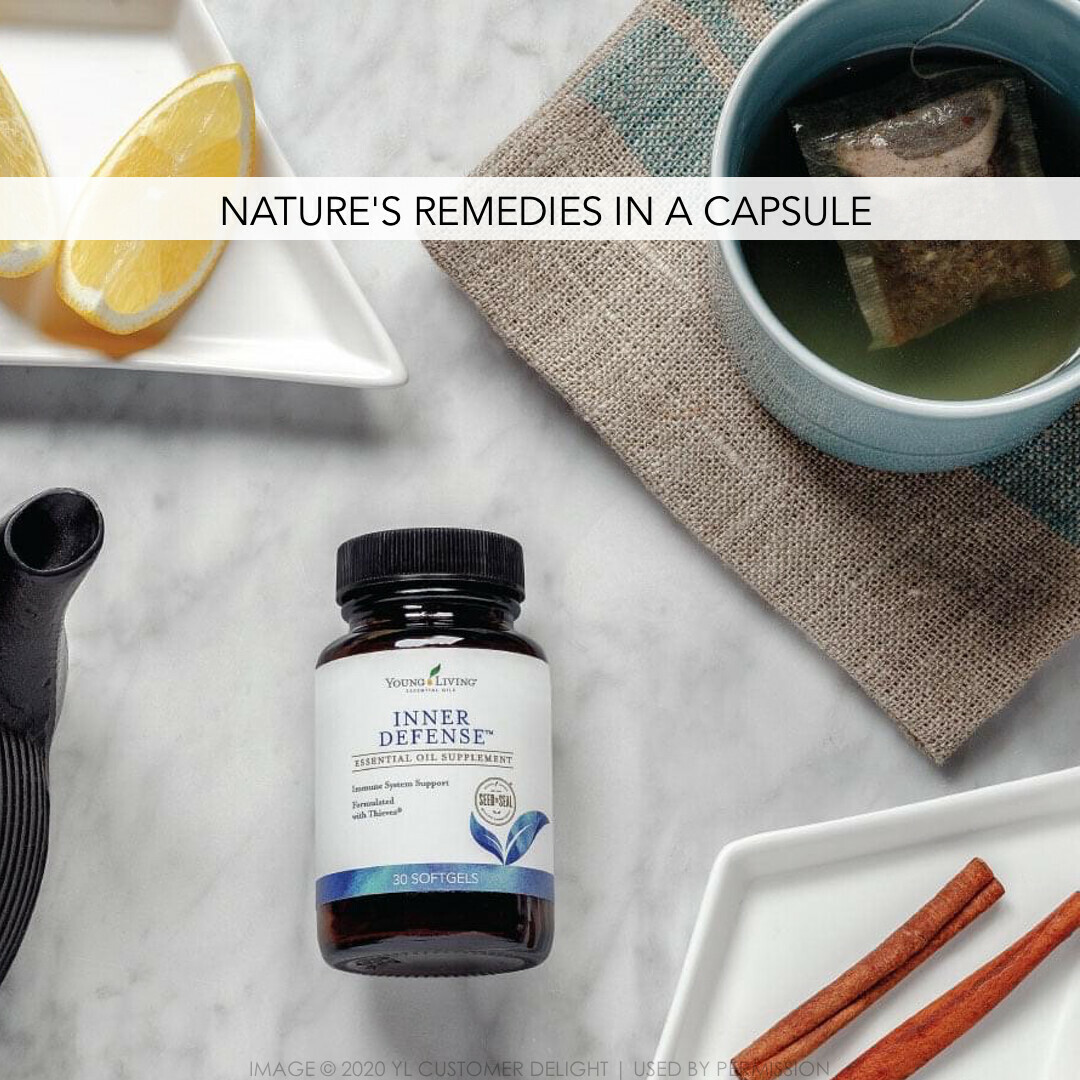 This is a friendly reminder that being prepared for winter wellness is more important than ever! One thing we're stocking up on is Inner Defense. It strengthens the immune and respiratory systems and is a must-have for every family’s wellness cabinet, Inner Defense combines Thieves, Oregano, Thyme, and Lemongrass to create a potent supplement which helps reinforce systemic defenses, creates unfriendly terrain for yeast/fungus, bacteria and other bugs, and promotes healthy respiratory function. We take one a day for maintenance, and one or two every 3-4 hours when we start feeling unwell.
This is a friendly reminder that being prepared for winter wellness is more important than ever! One thing we're stocking up on is Inner Defense. It strengthens the immune and respiratory systems and is a must-have for every family’s wellness cabinet, Inner Defense combines Thieves, Oregano, Thyme, and Lemongrass to create a potent supplement which helps reinforce systemic defenses, creates unfriendly terrain for yeast/fungus, bacteria and other bugs, and promotes healthy respiratory function. We take one a day for maintenance, and one or two every 3-4 hours when we start feeling unwell.
Post in the comments: What's one thing you do when you first start to feel unwell?
 This is a friendly reminder that being prepared for winter wellness is more important than ever! One thing we're stocking up on is Inner Defense. It strengthens the immune and respiratory systems and is a must-have for every family’s wellness cabinet, Inner Defense combines Thieves, Oregano, Thyme, and Lemongrass to create a potent supplement which helps reinforce systemic defenses, creates unfriendly terrain for yeast/fungus, bacteria and other bugs, and promotes healthy respiratory function. We take one a day for maintenance, and one or two every 3-4 hours when we start feeling unwell.
This is a friendly reminder that being prepared for winter wellness is more important than ever! One thing we're stocking up on is Inner Defense. It strengthens the immune and respiratory systems and is a must-have for every family’s wellness cabinet, Inner Defense combines Thieves, Oregano, Thyme, and Lemongrass to create a potent supplement which helps reinforce systemic defenses, creates unfriendly terrain for yeast/fungus, bacteria and other bugs, and promotes healthy respiratory function. We take one a day for maintenance, and one or two every 3-4 hours when we start feeling unwell.Post in the comments: What's one thing you do when you first start to feel unwell?
xoxo
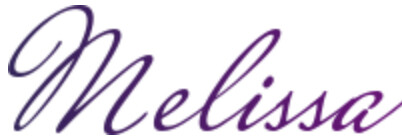

 Did you hear the news? Young Living just announced free shipping on all orders of 100 PV or more! The new Economy shipping option is always free for 100 PV orders weighing 1-70 lbs! There are also new upgraded shipping options and you can check out those options and details in our Facebook group and on the YL website.Three cheers for free shipping! I hope you have a great week.
Did you hear the news? Young Living just announced free shipping on all orders of 100 PV or more! The new Economy shipping option is always free for 100 PV orders weighing 1-70 lbs! There are also new upgraded shipping options and you can check out those options and details in our Facebook group and on the YL website.Three cheers for free shipping! I hope you have a great week.xoxo

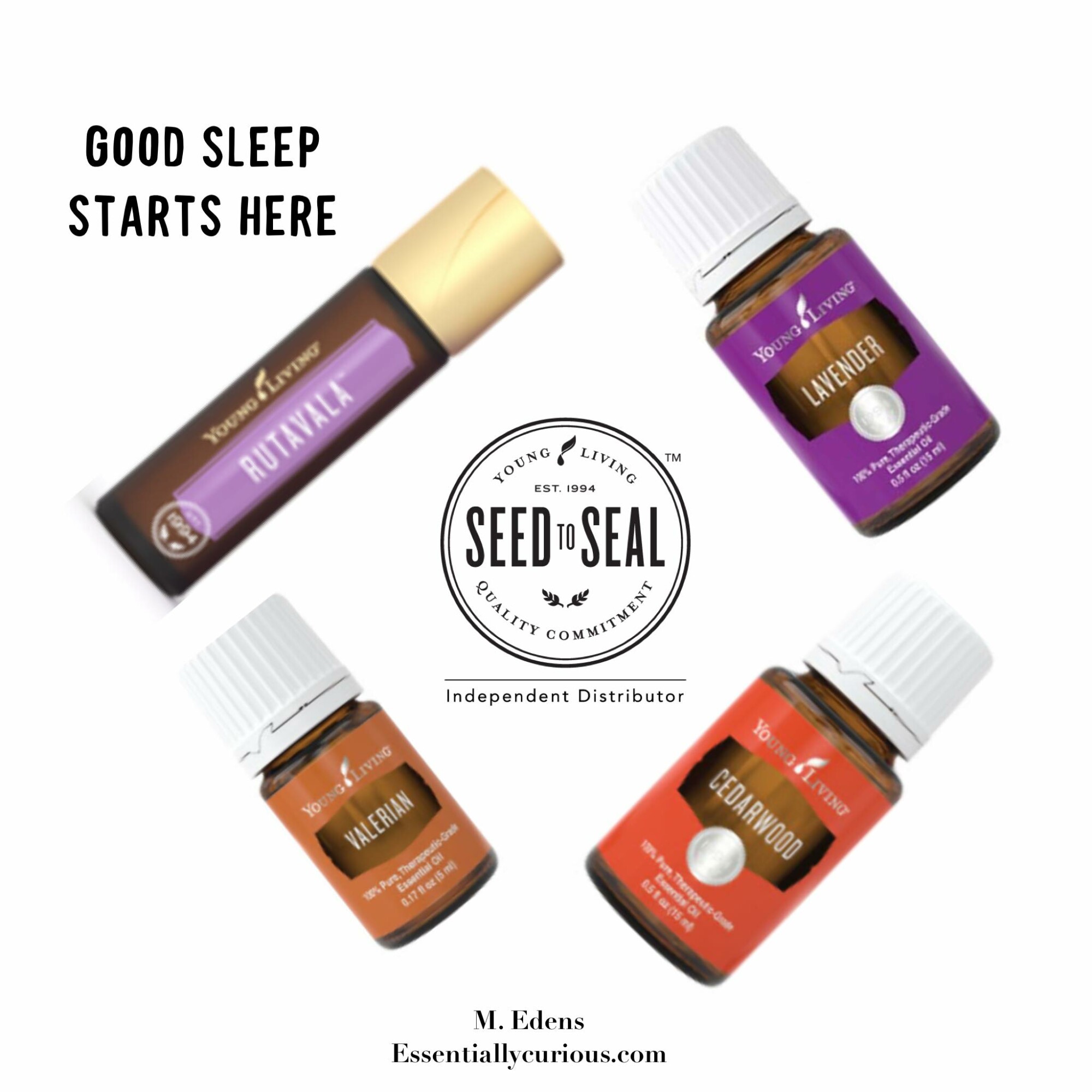
We all know getting to REM sleep is important for healing, growth, development, and mental stability - but so many of us struggle to get rest because of anxiety, daily stress, worry, fear, or the to-do list of the next day. This four-step process to restful sleep is one I began using about 30 years before I discovered essential oils. Essential oils only made it better, faster, and even more effective. These steps have helped me sleep in truly uncomfortable places and situations, no matter how much noise, stress, or (how little) time I had available to me, and the best part is: with practice, you can be asleep in less than five minutes.

- Put on your favorite oil for relaxation. Our favorites are in the graphic at the top of the page. Try different oils - even those that smell like cat pee (Cedarwood to some people), or dirty socks (looking at you, Valerian!) The smelly oils can be just as effective on the bottom of the feet as on the back of your neck or in the diffuser. From this point, you have about 20 minutes for the oil to ping pong through every cell in your weary body.
- Empty your brain. Writing down tomorrow's to-do list will not only reassure your brain that you will still get to those items without forgetting anything, but it allows your mind to rest. Put this list in a safe place for use the next time you're working.

- Get as comfortable as you can. Maybe you're in a Humvee in the desert, or perhaps you're riding cross-country in a car or plane, or maybe you're lucky enough to be in your own cozy covers - whatever your situation, find the more comfortable position you're able.
- Sink down in. This part may take a little practice. But it is the key to this process. You're going to empty your mind, and imagine one of the following two scenarios. Which one of these I use depends on my mood - both are equally effective. For the first, imagine you're in a soft, fluffy cloud, and that you're sinking down into it. As you sink down, feel each part of your body relax more and more. Start with your head and face, move down to your neck, shoulders, arms, chest, abdomen, hips, thighs, lower legs, feet - each piece needs to relax and grow heavier and heavier as it sinks down into the clouds.
For the second, imagine you're at the top of a flight of neverending stairs - they just go down, and down, and down. Αs you walk down the stairs, count backwards from 100 and feel each part of your body getting heavy.
Give some extra time to this technique at first. When I began, I would lay on the floor of my room and walk myself backwards into rest. After about 30 minutes I would arise feeling rested. Gradually I began to use these steps for sleep, until I hit a point where no matter how distracted I was, I could get myself to sleep in minutes. Anyone can learn to do this with practice.
Come back in a few weeks and tell me how it's going! If it's working well for you, share this post to help those in your life who need a little more REM.
Come back in a few weeks and tell me how it's going! If it's working well for you, share this post to help those in your life who need a little more REM.
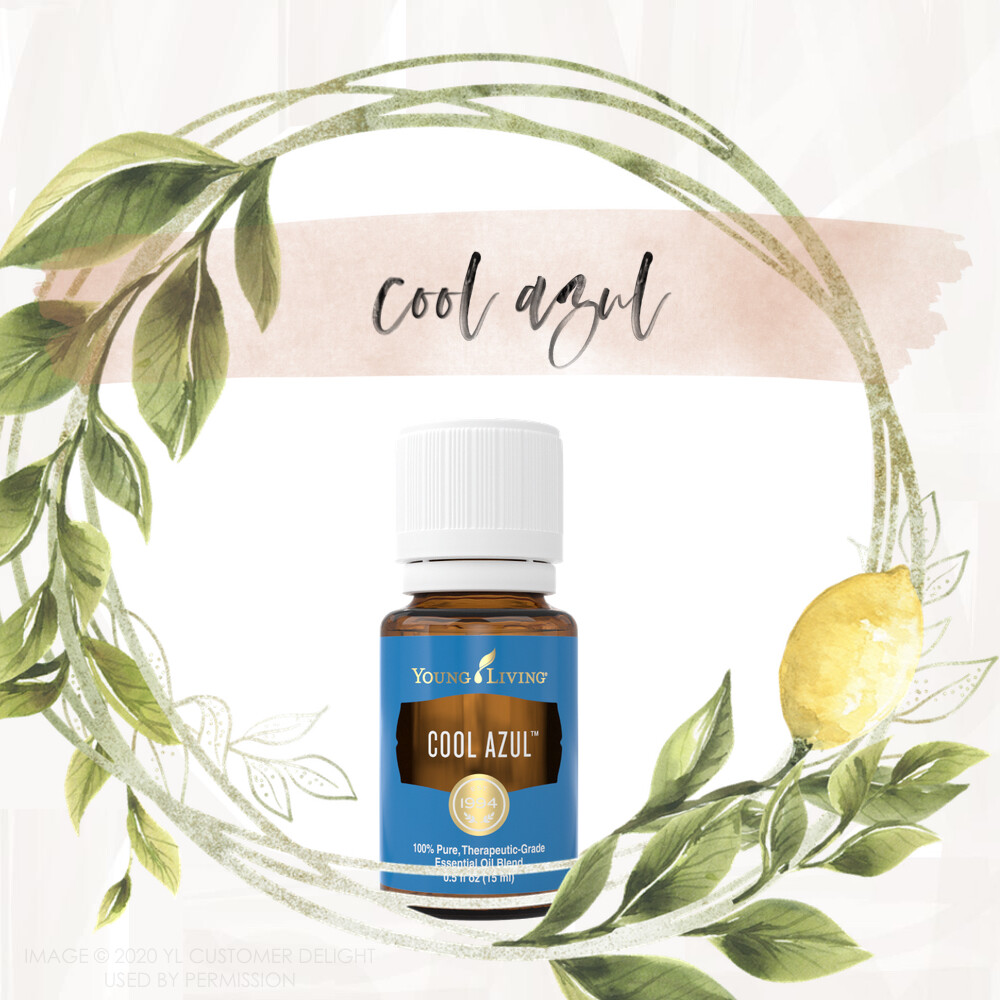
15 ML COOL AZUL - FREE WITH 300PV ORDER
Cool Azul™ is a proprietary essential oil blend created by D. Gary Young that includes the light aroma of Dorado Azul and the warm fragrance of Plectranthus Oregano (both Young Living exclusive oils), along with Peppermint, Wintergreen, Sage, Copaiba, Blue Cypress, Elemi, and other oils. Apply this blend topically for a cool sensation and aromatic experience. Cool Azul is ideal for use before, during, and after physical activities. Attach an AromaGlide™ roller fitment to the bottle and pack it in your gym bag, purse, or backpack for quick and easy on-the-go use.
HISTORICAL USES OF WINTERGREEN
Wintergreen leaves have long been used for its ability to relieve the pain and inflammation associated with rheumatism. Wintergreen leaves were used traditionally by Native Americans and early American pioneers to make a tea used to treat “dysentery, fever, headaches, rheumatism, sore throats, and toothaches.” Both the Mohawk and Iroquois used wintergreen for its pain-relieving qualities. Also, the berries of the wintergreen were eaten raw or cooked in pies by the Native Americans.
HISTORICAL USES OF WINTERGREEN
Wintergreen leaves have long been used for its ability to relieve the pain and inflammation associated with rheumatism. Wintergreen leaves were used traditionally by Native Americans and early American pioneers to make a tea used to treat “dysentery, fever, headaches, rheumatism, sore throats, and toothaches.” Both the Mohawk and Iroquois used wintergreen for its pain-relieving qualities. Also, the berries of the wintergreen were eaten raw or cooked in pies by the Native Americans.
HISTORICAL USES OF PEPPERMINT
Peppermint leaves have been used as a remedy for indigestion since the Ancient Egyptians, and the ancient Greeks and Romans valued it as a stomach soother as well. During the eighteenth century, the herb became popular in Western Europe as a remedy for nausea, vomiting, morning sickness, respiratory infections, and menstrual disorders.
Peppermint was first listed in the London Pharmacopoeia in 1721. In modern times it appears in the British Herbal pharmacopeia as a remedy for intestinal colic, gas, colds, morning sickness, and menstruation pain.
HISTORICAL USES OF SAGE
From 742 AD to 814 AD, Charles the Great ran a reputable medical school in Salerno. In this school, sage was one of 100 plants grown on the property. It was said that he appreciated sage most of all and that even today, it is mandatory to be grown at all monasteries. It was known as the “Salvation Plant” originating from the world “salvarem,” which means “cure.” It was frequently used as a decoction on wounds to stop bleeding, for ulcers, and as a tea for sore throats and hoarseness.
Sage has a very long and rich history due to both its medicinal and culinary uses. In 812 AD, sage was one of the plants deemed so important that Charlemagne ordered it planted on German Imperial farms, no doubt due to the lucrative trade business as well as for its medicinal popularity.
In ancient Rome, sage was considered to have substantial healing properties, particularly helpful in the digestion of the ubiquitous fatty meats of the time, and was deemed a part of the official Roman pharmacopeia. The herb was used to heal ulcers, to help stop the bleeding of wounds, and to soothe a sore throat. The Chinese used sage to treat colds, joint pain, typhoid fever, and kidney and liver issues.
HISTORICAL USES OF OREGANO
In the middle ages, oregano was commonly used for medicinal purposes. They would chew the oregano leaves as a cure for many ailments such as rheumatism, toothache, indigestion, and coughing fits.
During this time, Oregano also made the journey to China. It was also used for medicinal purposes in this region. The Chinese people believed it helped with fever, vomiting, and upset stomach.
During the Elizabethan era, oregano was used for just about anything. It was used to encourage good luck and good health. It was used in spells for happiness, tranquility, luck, health, protection, and letting go of a loved one.
Peppermint was first listed in the London Pharmacopoeia in 1721. In modern times it appears in the British Herbal pharmacopeia as a remedy for intestinal colic, gas, colds, morning sickness, and menstruation pain.
HISTORICAL USES OF SAGE
From 742 AD to 814 AD, Charles the Great ran a reputable medical school in Salerno. In this school, sage was one of 100 plants grown on the property. It was said that he appreciated sage most of all and that even today, it is mandatory to be grown at all monasteries. It was known as the “Salvation Plant” originating from the world “salvarem,” which means “cure.” It was frequently used as a decoction on wounds to stop bleeding, for ulcers, and as a tea for sore throats and hoarseness.
Sage has a very long and rich history due to both its medicinal and culinary uses. In 812 AD, sage was one of the plants deemed so important that Charlemagne ordered it planted on German Imperial farms, no doubt due to the lucrative trade business as well as for its medicinal popularity.
In ancient Rome, sage was considered to have substantial healing properties, particularly helpful in the digestion of the ubiquitous fatty meats of the time, and was deemed a part of the official Roman pharmacopeia. The herb was used to heal ulcers, to help stop the bleeding of wounds, and to soothe a sore throat. The Chinese used sage to treat colds, joint pain, typhoid fever, and kidney and liver issues.
HISTORICAL USES OF OREGANO
In the middle ages, oregano was commonly used for medicinal purposes. They would chew the oregano leaves as a cure for many ailments such as rheumatism, toothache, indigestion, and coughing fits.
During this time, Oregano also made the journey to China. It was also used for medicinal purposes in this region. The Chinese people believed it helped with fever, vomiting, and upset stomach.
During the Elizabethan era, oregano was used for just about anything. It was used to encourage good luck and good health. It was used in spells for happiness, tranquility, luck, health, protection, and letting go of a loved one.
HISTORICAL USES OF LAVENDER
The medicinal uses of lavender date back to 2500 BC. The ancient Egyptians used lavender as a preservative and fragrant perfume. The word Lavender is from the Latin word lavare - which means “to wash”. For centuries lavender has been used for skin ailments. Infusions of lavender were historically used to soothe insect bites, sunburns, and cuts and burns. Queen Victoria was a vocal admirer of the disinfecting properties of lavender and expected her royal residents to use lavender water and distilled oil because she favored it so highly.
The medicinal uses of lavender date back to 2500 BC. The ancient Egyptians used lavender as a preservative and fragrant perfume. The word Lavender is from the Latin word lavare - which means “to wash”. For centuries lavender has been used for skin ailments. Infusions of lavender were historically used to soothe insect bites, sunburns, and cuts and burns. Queen Victoria was a vocal admirer of the disinfecting properties of lavender and expected her royal residents to use lavender water and distilled oil because she favored it so highly.
HISTORICAL USES OF DORADO AZUL
Until 2006, Dorado Azul was recognized only as a weed in it’s native Ecuador. Young Living Founder D. Gary Young gave it it’s the botanical name of Hyptis suaveolens after analyzing the chemical makeup of the plant.
Until 2006, Dorado Azul was recognized only as a weed in it’s native Ecuador. Young Living Founder D. Gary Young gave it it’s the botanical name of Hyptis suaveolens after analyzing the chemical makeup of the plant.
